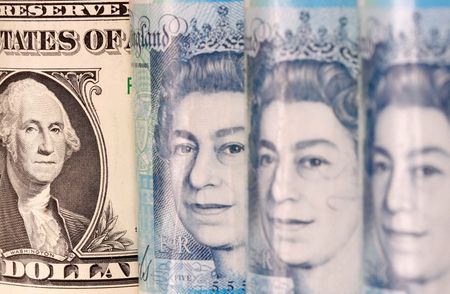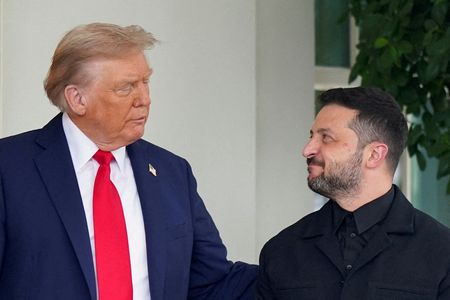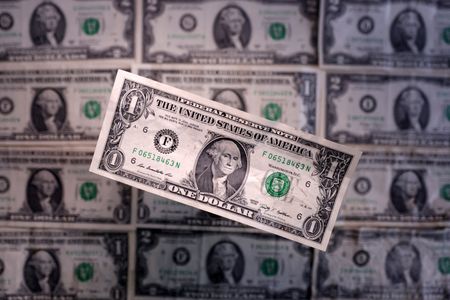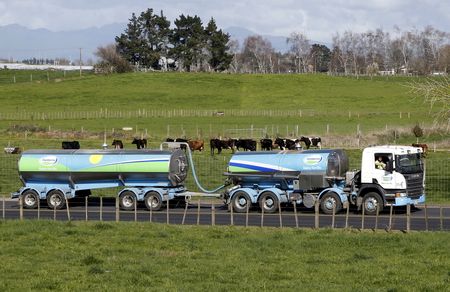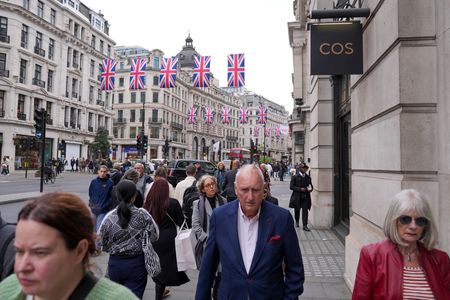By Samuel Indyk
LONDON (Reuters) -Britain’s pound was steady against the dollar on Thursday but remained close to a three-year high reached earlier in the week as investors shunned the U.S. currency in the wake of U.S. President Donald Trump’s tariffs.
A survey on Thursday confirmed that British manufacturing activity shrank for the seventh month in a row in April, highlighting the effects that Trump’s tariffs and Britain’s tax hike for employers are having on business activity.
The pound was last at $1.3327, down less than 0.1% on the day. It touched its highest level since February 2022 on Monday, having risen 3.2% last month, its biggest monthly gain against the dollar since November 2023.
The U.S. currency has been one of the biggest casualties of Trump’s trade policy, as the flip-flopping on tariffs hit confidence and slashed growth expectations.
“We expect the pound to remain firm against the U.S. dollar over the course of the year, though some short-term setbacks may occur following the recent rally,” said UBS FX strategists in a note.
Attention on Thursday was on local elections across parts of Britain, which are not historically market moving but can provide clues about future voting patterns.
The right-wing populist Reform UK Party is expected to perform well, dealing a blow to the ruling Labour Party and main opposition Conservatives.
ING head of FX strategy Chris Turner also pointed to this month’s UK-EU summit as a potential event to watch, with expectations that Britain could sign a new security and defence pact with the bloc.
“Closer European relations normally help sterling,” Turner said.
The pound was last at 84.99 pence per euro, little changed on the day.
It fell 1.5% against the euro last month, its biggest monthly drop against the single currency since December 2022.
The euro has been one of the main beneficiaries from recent shunning of the dollar, gaining against most other major currencies through April.
“We think the global investment environment will be the driver for euro-pound in the coming months,” said Mohamad Al-Saraf, FX research associate at Danske Bank.
“If we see elevated uncertainty, widening credit spreads and positive correlation to the negative environment as we believe, we favour a weaker pound,” Al-Saraf added, expecting the euro to reach 88 pence on both a six- and 12-month horizon.
(Reporting by Samuel IndykEditing by Mark Potter)

